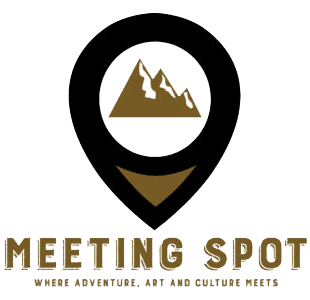Busuanga
| Languages spoken | Tribal Language "Tagbanua", Tagalog & English |
|---|---|
| Currency used | Pesos |
| Country name | Republic of the Philippies |
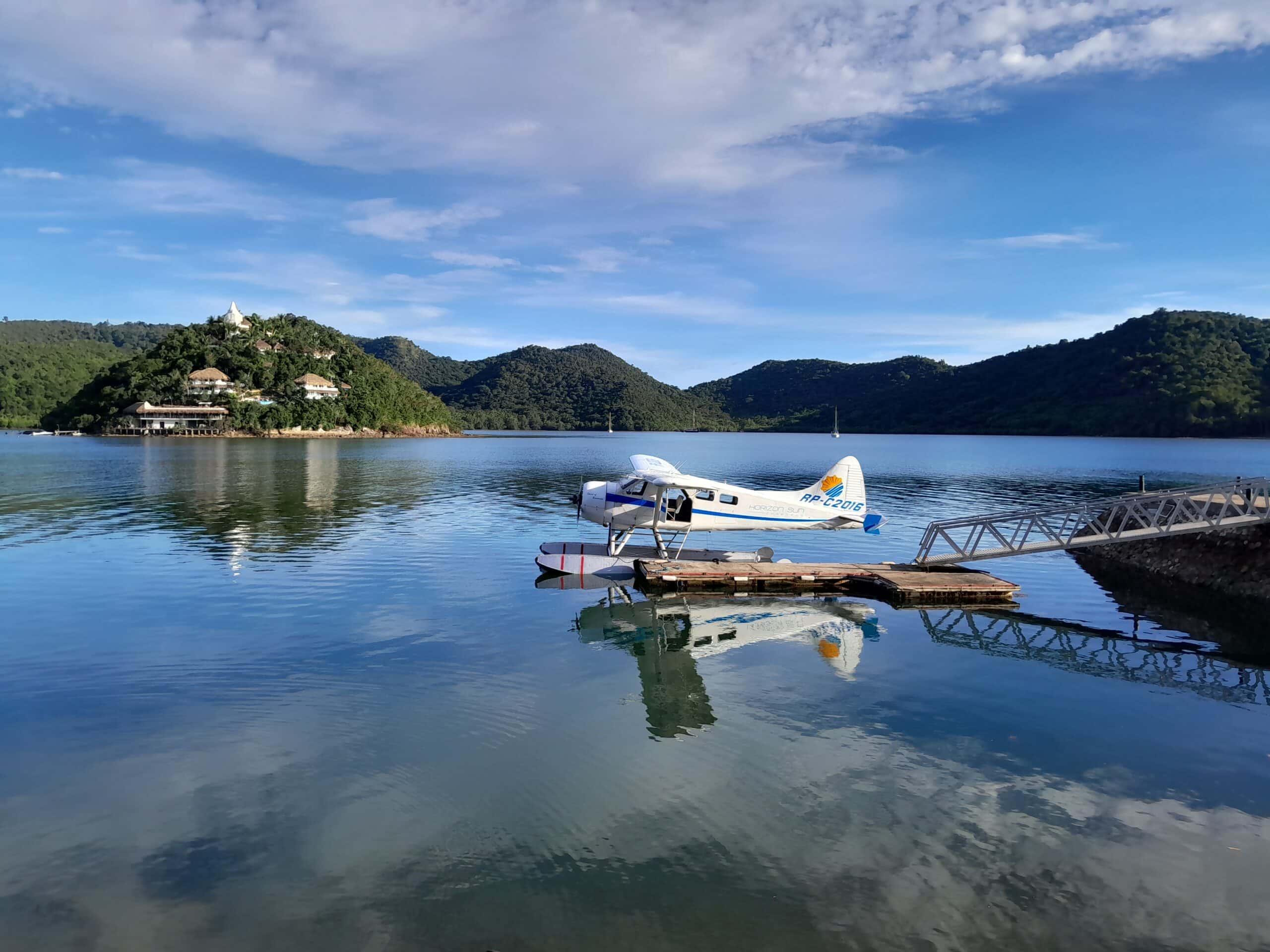
Busuanga Island, part of the Calamian Islands are renowned for their historical and environmental treasures, making them top-tier island destinations in the Philippines.
Featuring crystal-clear waters, untouched beaches, and diverse marine ecosystems, the Calamian Archipelago, home to Coron Island, Busuanga Island, Cullion Island, and more, offers an unparalleled experience for scuba diving and snorkeling enthusiasts.
Coron Island's breathtaking rock formations, tranquil lagoons, and vibrant barrier reefs make it a stunning and picture-perfect destination for travelers seeking natural beauty and adventure.
| Languages spoken | Tribal Language "Tagbanua", Tagalog & English |
|---|---|
| Currency used | Pesos |
| Country name | Republic of the Philippies |
As the primary entry point to Coron, one of the Philippines’ rapidly burgeoning tourist destinations, Busuanga's recent history has been closely entwined with the hospitality sector.
While renowned for centuries as a sought-after destination, this captivating region boasts a rich historical tapestry stretching back millennia. Among its indigenous inhabitants are the Tagbanua people, whose lineage can be traced back to the legendary Tabon Man, discovered on the nearby island of Palawan. These ancient remains are believed to be the oldest modern human remains found in the Philippines.
Throughout history, Busuanga's strategic location has made it a focal point of various influences. During World War II, for instance, Japanese forces utilized its numerous bays as safe harbors, transforming the region into a significant naval stronghold. Today, remnants of this era lie beneath the sea, offering popular diving sites for enthusiasts.
Following the war, a wave of immigration from islands like Cebu and Luzon reshaped the demographics of Busuanga, pushing the indigenous Tagbanua to the fringes. Yet, despite these shifts, the island's economy and infrastructure experienced a remarkable upswing, fueled by the steady influx of tourists drawn to its natural beauty and vibrant culture.
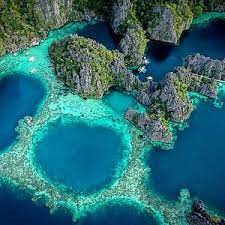
Busuanga Island is known for its dive sites, limestone islands, strings of white beach islands, waterfalls, lakes, virgin forests, and wildlife nature reserves. It is pristine, exotic, and uncrowded.
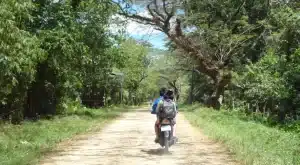

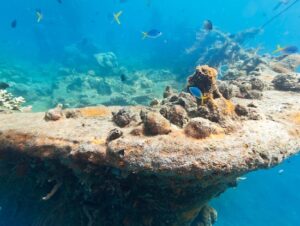
Ocam Ocam Beach is arguably the finest and most easily accessible beach on Busuanga Island. The journey from Coron Town takes approximately 2 hours by motorcycle, with generally well-maintained roads. The trip is definitely worth it to explore this idyllic part of the island.
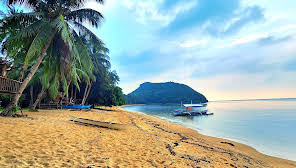
When exploring things to do in Busuanga, embarking on an island hopping adventure is an absolute must. This Palawan region is renowned for its immaculate beaches, stunning turquoise lagoons, and captivating lakes.
Embark on a journey aboard a traditional Filipino Bangka boat, cruising through the waters and making stops at some of Palawan’s most breathtaking destinations, such as Coron Island, Barracuda Lake, Twin Lagoon, and Kayangan Lake.
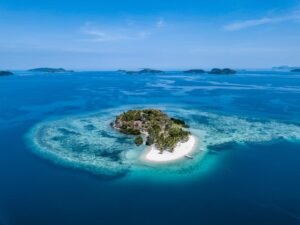
Meeting Spot Travel & Tours can arrange your island hopping tours with our partner hotel on Busuanga island, and we can fly you on a day trip from Puerto Princesa with our seaplane partner Horizon Sun Charters
Discover the wonders of Busuanga Island with the freedom of a scooter tour. Numerous rental spots across the island offer affordable scooter options, allowing you to navigate at your own pace.

While road conditions have improved, it’s crucial to prioritize safety, especially considering occasional mixtures of dirt and concrete roads, along with steep slopes. Additionally, gas stations aren’t plentiful, so monitor your fuel gauge closely to avoid unexpected stops.
Dugongs, once mistaken for mermaids, are herbivorous marine mammals found in warm coastal waters spanning from the western Pacific Ocean to the eastern coast of Africa. Often dubbed as sea cows, these gentle creatures bear a striking resemblance to their pleasantly plump cousin, the manatee. Regrettably, factors like fishing-related incidents, habitat degradation, and hunting have pushed the species to the brink of extinction.
Fortunately, several organizations have initiated conservation initiatives to combat the rapid decline of Dugongs. Notably, Dugongs became the first marine mammals protected in the Philippines, where they still inhabit the waters of Northern Busuanga.

For those keen on witnessing these serene creatures, the eco-conscious Dugong Dive Center in North Busuanga serves as an ideal starting point. Comprising environmentalists and members of the Philippines Coast Guard Auxiliary, this team provides a unique opportunity to observe Dugongs in their natural habitat up close.
The eco-tourism program “Dugong Watching“ with the Dugong Dive Center locate North of Busuanga on El Rio Y Mar Resort in Maricaban Bay, is a full-day excursion to several feeding grounds along the Busuanga coast line and two turtle islands for skin and scuba divers. If a dugong is spotted (they surface every 4 to 5 minutes), you can watch the animal first from the boat (like whale watching) then approach the dugong by snorkelling and if the dugong doesn’t shy off, on Scuba. Dugong Dive Center always offer the divers two dives on a small coral garden and sea grass bed with all its glitters.
Dugong Dive Center has been working with international documentary crews, photographers, conservationists, biologists, etc. over the years to educate people about this wonderful but endangered species.
Calauit Island stands out as an exceptional destination teeming with diverse African wildlife, boasting an array of species such as zebras, giraffes, impalas, gazelles, bushbucks, eland, waterbucks, and tobis. This unique ecosystem traces its roots back to the 1970s when President Ferdinand Marcos orchestrated the relocation of these animals from Kenya to prevent their extinction. To accommodate their new inhabitants, the indigenous population – Tagbanwa, was resettled to another island, and the landscape was transformed into a savannah-like habitat through forest clearing efforts.
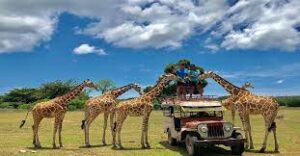
Presently, these African creatures flourish on Calauit Island, coexisting harmoniously with native Philippine species like the mouse deer, bear cat, Palawan peacock pheasant, sea turtles, and Philippine crocodiles. This remarkable sanctuary offers visitors a rare opportunity to witness the fascinating interplay between exotic African wildlife and indigenous Philippine fauna in a captivating natural setting.
There are many places to stay on Busuanga Island. What we highly recommend are accommodations where we can take you with our partner, Horizon Sun Charters seaplane. On Coron Island, there’s the Paolyn Houseboats situated in the tranquil, pristine, and unpolluted waters. Surrounded by Coron Island cliffs formation that you can also enjoy stunning views from your bed and during your freshly prepared meals.
Additionally, Bacau Bay Resort Coron provides a tranquil atmosphere and is conveniently located in Coron Town Proper. Busuanga Bay Lodge, Al Faro Cosmio Hotel, and Marina Del Sol & Yacht Club are situated 45 minutes away from Coron Town in a bay that offers secure anchorage for yachts, and it’s also closest to the best wreck diving spots on the island. We also suggest El Rio Y Mar Resort located in Maricaban Bay, North of Busuanga Island, offering a pleasant and welcoming atmosphere. Other resorts also seaplane friendly and of high standard are Two Seasons Resort, Sangat Island Dive Resort and Sunlight Ecotourism Island Resort.

